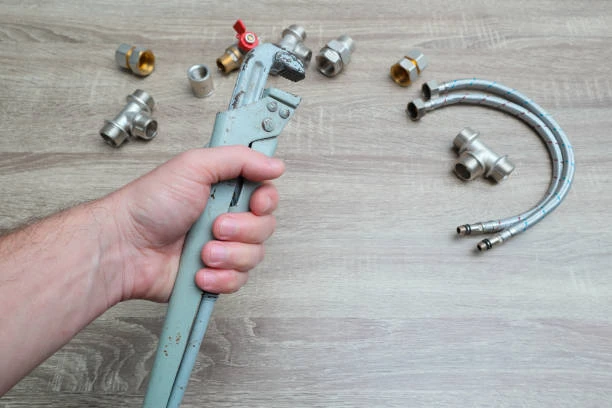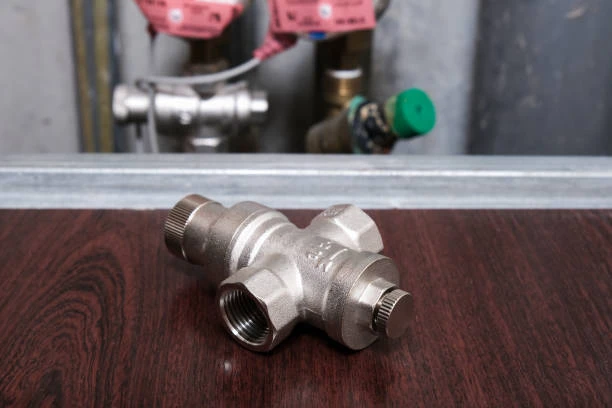Introduction
When it comes to Reverse Osmosis (RO) plants, selecting the right piping and fittings is crucial for ensuring efficient water purification. PEX pipe and fittings are increasingly favored in these systems due to their numerous benefits. Let’s explore why PEX is a smart choice for your RO applications.
What is an RO Plant?
Definition and Purpose
An RO plant is designed to remove contaminants from water through a semi-permeable membrane, providing clean, purified water for various applications, from drinking to industrial use.
Components of an RO System
Key components of an RO system include pre-filters, the RO membrane, storage tanks, and post-filters—all interconnected by piping and fittings.
Why Choose PEX Pipe and Fittings for RO Plants?
Flexibility and Durability
PEX piping is highly flexible, allowing for easy routing around obstacles. This flexibility helps minimize the number of fittings required, which can reduce potential leak points.
Resistance to Corrosion and Scaling
Unlike metal pipes, PEX does not corrode or scale, making it an ideal choice for RO systems where water quality is paramount.
Types of PEX Pipes Suitable for RO Systems
PEX-a, PEX-b, and PEX-c
- PEX-a: Offers excellent flexibility and is great for cold environments.
- PEX-b: Slightly less flexible but commonly used in many plumbing applications.
- PEX-c: Best for high-temperature applications.
Choosing the Right Type for Your Application
Consider the specific needs of your RO system, including temperature and pressure conditions, when selecting the appropriate type of PEX.
Common PEX Fittings for RO Plants
Crimp Fittings
These fittings provide secure connections and are ideal for high-pressure applications commonly found in RO systems.
Push-Fit Fittings
These are perfect for quick installations, requiring no tools—just push the PEX pipe into the fitting.
Compression Fittings
Ideal for situations requiring a tighter seal, compression fittings are also versatile and easy to use.
Benefits of Using PEX in RO Applications
Cost-Effectiveness
PEX is generally more affordable than traditional materials, both in terms of initial costs and long-term maintenance.
Ease of Installation and Maintenance
The lightweight nature and flexibility of PEX make installation straightforward, and maintenance is minimal compared to other materials.
Installation Guide for PEX in RO Systems
Required Tools
Before starting, gather tools such as a pipe cutter, crimping tool, or push-fit tool, depending on the fittings used.
Step-by-Step Installation Process
- Measure and Cut: Cut the PEX pipe to the required length.
- Attach Fittings: Secure the appropriate fittings to each end of the pipe.
- Secure the Connection: Use crimping, push-fit, or compression methods as needed.
- Test for Leaks: After installation, check all connections for leaks.

Maintenance Tips for PEX in RO Plants
Regular Inspections
Conduct routine inspections of your PEX plumbing to identify any signs of wear, leaks, or scaling.
Troubleshooting Common Issues
If you notice low water pressure or leaks, troubleshoot the system by checking connections and fittings for issues.
Customer Experiences and Feedback
Insights from Users
Many users appreciate the flexibility and reliability of PEX in RO systems, often highlighting its ease of installation.
Common Praises and Concerns
While most feedback is positive, some users express concerns regarding the UV sensitivity of PEX if exposed to direct sunlight.
Comparing PEX with Other Materials for RO Plants
Key Differences with PVC and Copper
PEX is more flexible and resistant to corrosion compared to PVC, and it doesn’t have the same potential for leaks as copper when joints are involved.
Advantages of PEX
With its cost-effectiveness and ease of installation, PEX is often the preferred choice for modern RO systems.
Conclusion
In summary, PEX pipe and fittings are an excellent choice for RO plants, offering flexibility, durability, and resistance to corrosion. As you consider options for your water purification system, PEX stands out as a reliable and efficient solution.
FAQs
- Can PEX be used with RO membranes?
Yes, PEX is compatible with RO systems and does not affect the purity of the water. - How long does PEX last in RO applications?
PEX can last over 50 years with proper installation and maintenance. - Are there specific fittings for RO systems?
Yes, fittings such as crimp and push-fit are commonly used in RO applications. - Is PEX safe for potable water?
Yes, PEX is approved for use with drinking water and complies with safety standards. - What is the warranty on PEX products?
Warranties vary by manufacturer, but many offer lifetime warranties on PEX products.


















